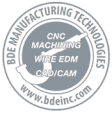Posted On: May 19, 2017
Design for Manufacturability, commonly abbreviated as DFM is the term synonymous with the design of products in such a way that they are easy to manufacture. In the previous post, we have discussed tips for DFM of sheet metal. In this post, we will discuss tolerance, and quick tips for designing other features.
Tips for Design for Manufacturability
The following tips will help ensure maximum precision during the sheet metal design
1. Curls: The curls are the hollow or circular rolls that are typically added to the edge of the sheet. Curled edges add strength to the sheet metal, and are safe to handle. The following tips will help minimize the need for special tooling.
1.1 The minimum radius should be two times the material thickness.
1.2 The minimum distance between a curl and the edge of a hole should be the radius of the curl + material thickness.
1.3 The minimum distance of a curl from the internal bend should be six times the material thickness + the radius of the curl.
1.4 The minimum distance of a curl from the external bend should be nine times the material thickness + the radius of the curl.
2. Dimples: These are small indentions created on the sheet metal using various devices. Some precautions should be taken to avoid deformation or fracture of the metal sheet while placing dimples near bends, holes, etc.
2.1 The minimum distance from dimple to the bend should be two times the thickness of the metal sheet + the inside radius of the dimple + radius of the bend.
2.2 If two dimples are created on the same sheet, extra care should be taken while placing them near each other. The minimum recommended distance between two dimples is four times the sheet thickness + radius of the dimple.
2.3 The minimum distance from the dimple to the nearest hole should be at least three times the sheet thickness.
2.4 The minimum distance between the part edge and the dimple should be four times material thickness + radius of the dimple, to avoid fracture or deformation of the metal.
3. Embossments: Shallow and small projections made on the surface of stamped metal parts are known as embossments. During this operation, the metal sheet is stretched, and deformed. The following tips will help avoid deformation to a large extent:
3.1 The maximum depth of V embossment should be less than or equal to three times the material sheet thickness.
3.2 The maximum depth for a flat embossment should be equal to the internal radius + external radius.
4. Extruded Holes: An extruded hole is created into a metal stamping for a variety of reasons. The most common use is screw attachment. The following tips will be helpful in getting them right:
4.1 The minimum distance between two extruded holes should be six times the material thickness.
4.2 The minimum distance from an extruded hole to an edge should be three times the thickness of material.
4.3 The minimum distance from an extruded hole to a bend should be three times the material thickness + bend radius.
All the above mentioned tips will help ensure maximum efficiency to your sheet metal project. For additional help, you can always contact a sheet metal fabrication expert like BDE Inc.
 info@bdeinc.com
info@bdeinc.com 866.262.6233
866.262.6233





